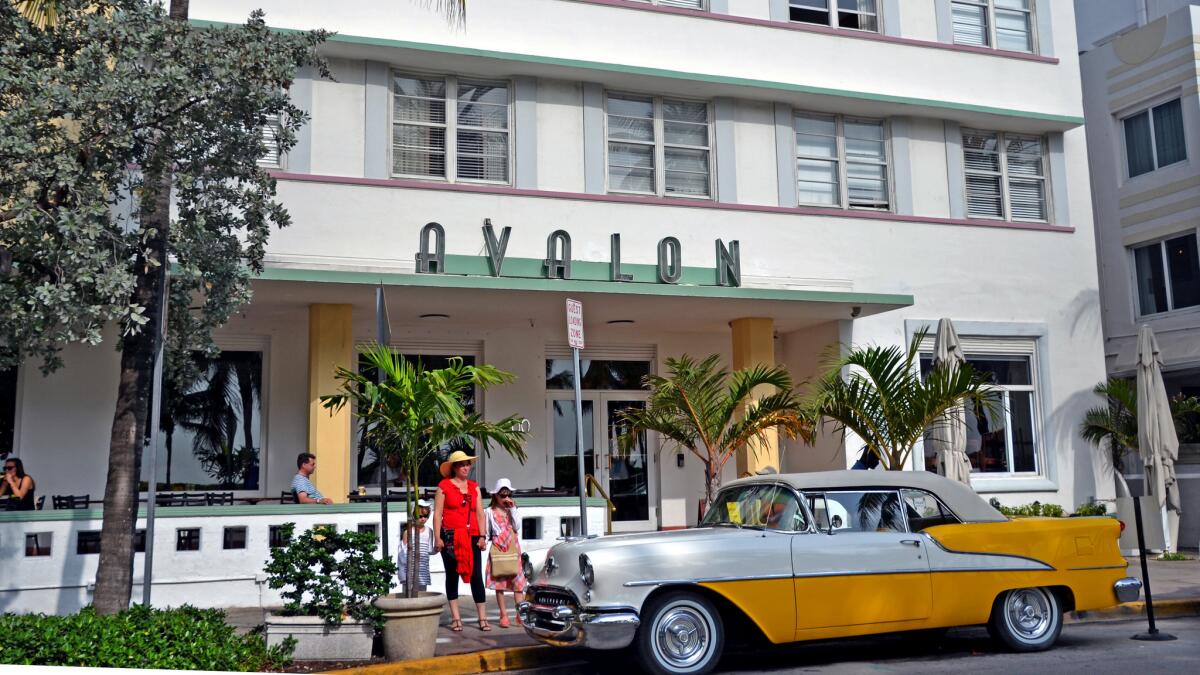You think your commute is bad? Try going to work in Miami if you live in Medellin, Colombia. Makes L.A. seem like a cakewalk

Prodded by wanderlust, I moved a few years ago from Miami to Medellín, Colombia, and settled into an apartment not far from the spot where Pablo Escobar, the infamous drug kingpin, was gunned down.
Although I lived in Medellín, I continued to work as a flight attendant at my airline’s base of operations in Miami. As is the case with thousands of commercial flight attendants and pilots, I had become an airline commuter.
I lived in one city, worked flight sequences that originated and terminated in a different base city, and relied on employee travel privileges for free unlimited air travel.
Some crew members commute because their families live in cities that have no airline base. Others do so because company seniority rankings allow them to work coveted European flights out of the New York base, for example, while a reasonable cost of living keeps them rooted in, say, Cleveland.
My reasons for commuting from Medellín were as much about adventure as economics. At the time, the exchange rate topped off around 2,500 Colombian pesos to the U.S. dollar. This allowed me, on a mediocre flight attendant salary, to live like a king.
For less than $500 a month, I rented a furnished penthouse apartment in a sleek new building in the middle-class barrio of Velódromo. A conscientious maid cleaned two days a week. First-run movies at cineplex theaters cost $3. My dating life flourished; I could wine and dine at elegant restaurants that would have cost three times as much in the States.
But for all the financial advantages, commuting from Medellín to Miami could be arduous.
To get to Miami in time for a 10 p.m. work trip to São Paulo, Brazil, I would crawl out of bed at 5 a.m., meet my driver (yes, I employed a part-time chauffeur) at the guard station and make the 45-minute drive through the lush Aburrá Valley and up a winding mountain road to José María Córdova International Airport.
When I hear passengers complaining about long lines and random pat-downs at Transportation Security Administration airline screening checkpoints in the United States, I resist the urge to roll my eyes and chuckle. Security screenings at Colombia’s second-largest airport are capital-I invasive.
After each carry-on passes through the X-ray machine, uniformed military personnel open the bag and search extensively. (On one occasion, officers disassembled the handle of my roll-aboard, no doubt looking for the ubiquitous white powder Colombia has been known to produce.)
After the bag search, every passenger is thoroughly frisked. Before you can board the aircraft, all carry-ons are searched again, this time by airline security personnel.
After the three-hour flight, I would clear Immigration and Customs in Miami. U.S. Customs inspectors took a special interest in passengers arriving from Colombia, so on several occasions I was sent to secondary screening where my unusual travel habits were called into question and my bags searched yet again.
At a nearby La Quinta Inns & Suites, I paid a monthly fee to share a two-room crash pad (topic of future column) with 13 commuting flight attendants who jetted in from as far away as Melbourne, Australia.
I would nap in one of five beds and wake up in time to work the eight-hour flight to São Paulo.
After a 35-hour layover there, I would work the return flight to Miami. Upon landing I would clear U.S. Customs, nap in the crash pad, hop on the flight to Medellín, drive down the mountain, through the Aburrá Valley and stumble into the penthouse where the whole commuting process would begin anew after three off-duty days.
I lasted nearly two years as an airline commuter. The constant flying finally wore me out.
But some flight attendants have thicker skin. My buddy Todd has been commuting from Miami to Bangkok, Thailand, for more than a decade.
After working back-to-back all-nighters to South America followed by 24 hours of flying to the other side of the world, he boards a bus in Bangkok for a five-hour ride to the village he calls home.
The next time you’re stuck in traffic, consider this: L.A. County has nearly 4.7 million workers who are 16 or older, according to U.S. Census Bureau statistics from 2015. More than 83% drive to work by car, truck or van, and nearly three-quarters drive alone, spending an average of 30 minutes on their commute. For an unlucky 13%, commute time was more than 60 minutes.
When you consider the rewards of where I lived, whose commute was (or is) worse?
More to Read
Sign up for The Wild
We’ll help you find the best places to hike, bike and run, as well as the perfect silent spots for meditation and yoga.
You may occasionally receive promotional content from the Los Angeles Times.






